Yamaha YZF-R1 2006 User Manual [ru]

YZFR1W
YZFR1WC
SERVICE MANUAL
LIT-11616-20-53 |
4C8-28197-10 |

EAS20040
YZFR1W/YZFR1WC
SERVICE MANUAL ©2006 by Yamaha Motor Corporation, U.S.A.
First edition, October 2006
All rights reserved. Any reproduction or unauthorized use without the written permission of Yamaha Motor Corporation, U.S.A. is expressly prohibited.
Printed in U.S.A.
P/N LIT-11616-20-53

EAS20070
NOTICE
This manual was produced by the Yamaha Motor Company, Ltd. primarily for use by Yamaha dealers and their qualified mechanics. It is not possible to include all the knowledge of a mechanic in one manual. Therefore, anyone who uses this book to perform maintenance and repairs on Yamaha vehicles should have a basic understanding of mechanics and the techniques to repair these types of vehicles. Repair and maintenance work attempted by anyone without this knowledge is likely to render the vehicle unsafe and unfit for use.
This model has been designed and manufactured to perform within certain specifications in regard to performance and emissions. Proper service with the correct tools is necessary to ensure that the vehicle will operate as designed. If there is any question about a service procedure, it is imperative that you contact a Yamaha dealer for any service information changes that apply to this model. This policy is intended to provide the customer with the most satisfaction from his vehicle and to conform to federal environmental quality objectives.
Yamaha Motor Company, Ltd. is continually striving to improve all of its models. Modifications and significant changes in specifications or procedures will be forwarded to all authorized Yamaha dealers and will appear in future editions of this manual where applicable.
NOTE:
•This Service Manual contains information regarding periodic maintenance to the emission control system. Please read this material carefully.
•Designs and specifications are subject to change without notice.
EAS20080
IMPORTANT MANUAL INFORMATION
Particularly important information is distinguished in this manual by the following.
 WARNING
WARNING
CAUTION:
NOTE:
The Safety Alert Symbol means ATTENTION! BECOME ALERT! YOUR SAFETY IS INVOLVED!
Failure to follow WARNING instructions could result in severe injury or death to the vehicle operator, a bystander or a person checking or repairing the vehicle.
A CAUTION indicates special precautions that must be taken to avoid damage to the vehicle.
A NOTE provides key information to make procedures easier or clearer.
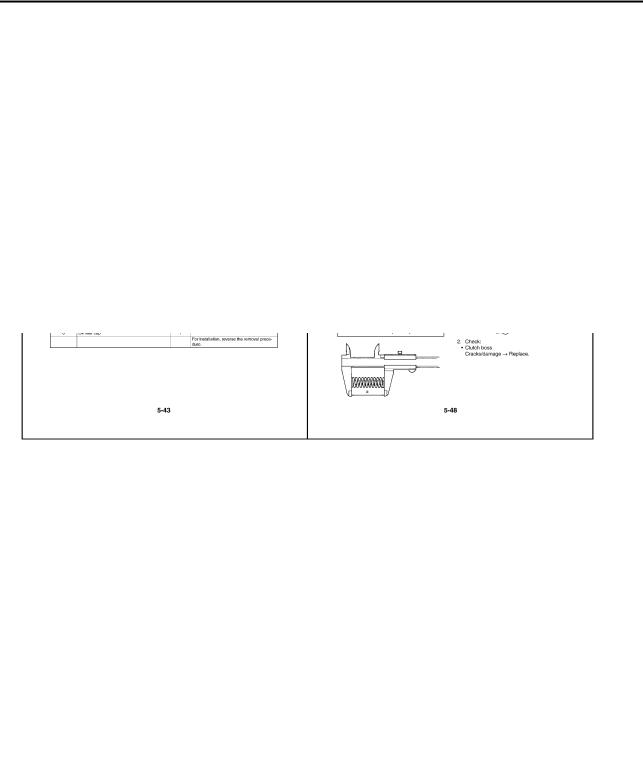
EAS20090
HOW TO USE THIS MANUAL
This manual is intended as a handy, easy-to-read reference book for the mechanic. Comprehensive explanations of all installation, removal, disassembly, assembly, repair and check procedures are laid out with the individual steps in sequential order.
•The manual is divided into chapters and each chapter is divided into sections. The current section title is shown at the top of each page “1”.
•Sub-section titles appear in smaller print than the section title “2”.
•To help identify parts and clarify procedure steps, there are exploded diagrams at the start of each removal and disassembly section “3”.
•Numbers are given in the order of the jobs in the exploded diagram. A number indicates a disassembly step “4”.
•Symbols indicate parts to be lubricated or replaced “5”. Refer to “SYMBOLS”.
•A job instruction chart accompanies the exploded diagram, providing the order of jobs, names of parts, notes in jobs, etc “6”.
•Jobs requiring more information (such as special tools and technical data) are described sequentially “7”.

EAS20100 |
16.Replace the part |
|
SYMBOLS |
||
|
The following symbols are used in this manual for easier understanding.
NOTE:
The following symbols are not relevant to every vehicle.
1 |
2 |
3 |
|
||||
|
|
|
|
|
|
|
|
|
|
|
|
|
|
|
|
|
|
|
|
|
|
|
|
|
|
|
|
|
|
|
|
4 5
T .
R .
7 8
6 |
|
|
|
|
|
|
|
|
|
|
|
|
|
|
|
|
|
|
|
|
|
|
|
|
|
|
|
|
|
|
|
|
|
|
|
|
|
|
|
|
|
|
|
|
|
|
|
|
|
|
|
|
|
|
|
|
|
|
|
|
|
|
|
|
|
|
|
|
|
|
|
|
|
|
|
|
|
|
|
|
|
|
|
|
|
|
|
|
|
|
9 |
|
|
|
|
|
|
10 |
|
|
|
11 |
|
|
||||
|
|
|
|
|
|
|
|
|
|
|
|
|
|
|
|
|
|
|
|
E |
|
|
G |
|
|
|
|
M |
|||||||
12 |
|
|
|
|
|
|
13 |
|
|
|
14 |
|
|
||||
|
|
B |
|
|
LS |
|
|
|
|
M |
|||||||
|
|
|
|
|
|
|
|
|
|
||||||||
15 |
|
|
|
|
|
|
|
|
|
|
16 |
|
|
||||
|
|
|
|
|
|
|
|
|
|
|
|
|
|
||||
|
|
|
|
|
|
|
|
|
|
|
|
||||||
|
LT |
|
|
|
|
|
|
|
|
New |
|||||||
1.Serviceable with engine mounted
2.Filling fluid
3.Lubricant
4.Special tool
5.Tightening torque
6.Wear limit, clearance
7.Engine speed
8.Electrical data
9.Engine oil
10.Gear oil 11.Molybdenum-disulfide oil 12.Wheel-bearing grease 13.Lithium-soap-based grease 14.Molybdenum-disulfide grease 15.Apply locking agent (LOCTITE®)


EAS20110 TABLE OF CONTENTS
GENERAL INFORMATION |
|
1 |
|
|
|
|
|
|
SPECIFICATIONS |
|
2 |
|
|
|
|
|
|
PERIODIC CHECKS AND ADJUSTMENTS |
|
3 |
|
|
|
|
|
|
CHASSIS |
|
4 |
|
|
|
|
|
|
ENGINE |
|
5 |
|
|
|
|
|
|
COOLING SYSTEM |
|
6 |
|
|
|
|
|
|
FUEL SYSTEM |
|
7 |
|
|
|
|
|
|
ELECTRICAL SYSTEM |
|
8 |
|
|
|
TROUBLESHOOTING |
|
9 |
|
|
|


GENERAL INFORMATION
IDENTIFICATION.......................................................................................... |
1-1 |
|
|
VEHICLE IDENTIFICATION NUMBER |
1-1 |
|
|
1 |
|||
MODEL LABEL....................................................................................... |
1-1 |
||
FEATURES |
1-2 |
||
|
|||
FI SYSTEM |
1-3 |
|
|
|
|||
IMPORTANT INFORMATION ..................................................................... |
1-12 |
|
|
PREPARATION FOR REMOVAL AND DISASSEMBLY........................ |
1-12 |
|
|
REPLACEMENT PARTS....................................................................... |
1-12 |
|
|
GASKETS, OIL SEALS AND O-RINGS................................................ |
1-12 |
|
|
LOCK WASHERS/PLATES AND COTTER PINS ................................. |
1-12 |
|
|
BEARINGS AND OIL SEALS ............................................................... |
1-13 |
|
|
CIRCLIPS ............................................................................................. |
1-13 |
|
|
CHECKING THE CONNECTIONS ............................................................. |
1-14 |
|
|
SPECIAL TOOLS........................................................................................ |
1-15 |
|

IDENTIFICATION
EAS20130
IDENTIFICATION
EAS20140
VEHICLE IDENTIFICATION NUMBER
The vehicle identification number “1” is stamped into the right side of the steering head pipe.
EAS20150
MODEL LABEL
The model label “1” is affixed to the frame. This information will be needed to order spare parts.
1-1

FEATURES
EAS20170
FEATURES
OUTLINE OF THE FI SYSTEM
The main function of a fuel supply system is to provide fuel to the combustion chamber at the optimum air-fuel ratio in accordance with the engine operating conditions and the atmospheric temperature. In the conventional carburetor system, the air-fuel ratio of the mixture that is supplied to the combustion chamber is created by the volume of the intake air and the fuel that is metered by the jet used in the respective carburetor.
Despite the same volume of intake air, the fuel volume requirement varies by the engine operating conditions, such as acceleration, deceleration, or operating under a heavy load. Carburetors that meter the fuel through the use of jets have been provided with various auxiliary devices, so that an optimum air-fuel ratio can be achieved to accommodate the constant changes in the operating conditions of the engine.
As the requirements for the engine to deliver more performance and cleaner exhaust gases increase, it becomes necessary to control the air-fuel ratio in a more precise and finely tuned manner. To accommodate this need, this model has adopted an electronically controlled fuel injection (FI) system, in place of the conventional carburetor system. This system can achieve an optimum air-fuel ratio required by the engine at all times by using a microprocessor that regulates the fuel injection volume according to the engine operating conditions detected by various sensors.
The adoption of the FI system has resulted in a highly precise fuel supply, improved engine response, better fuel economy, and reduced exhaust emissions.
1.Intake air temperature sensor
2.Engine trouble warning light
3.Air induction system solenoid
4.Atmospheric pressure sensor
5.Throttle position sensor (for throttle cable pulley)
6.Throttle servo motor
7.Throttle position sensor (for throttle valves)
8.Intake funnel servo motor
9.Injector
10.Intake air pressure sensor 11.Fuel pump
12.Lean angle sensor 13.ECU (engine control unit)
14.Starting circuit cut-off relay 15.Speed sensor
16.EXUP servo motor 17.O2 sensor
18.Crankshaft position sensor 19.Coolant temperature sensor 20.Spark plug
21.Ignition coil
22.Cylinder identification sensor
1-2
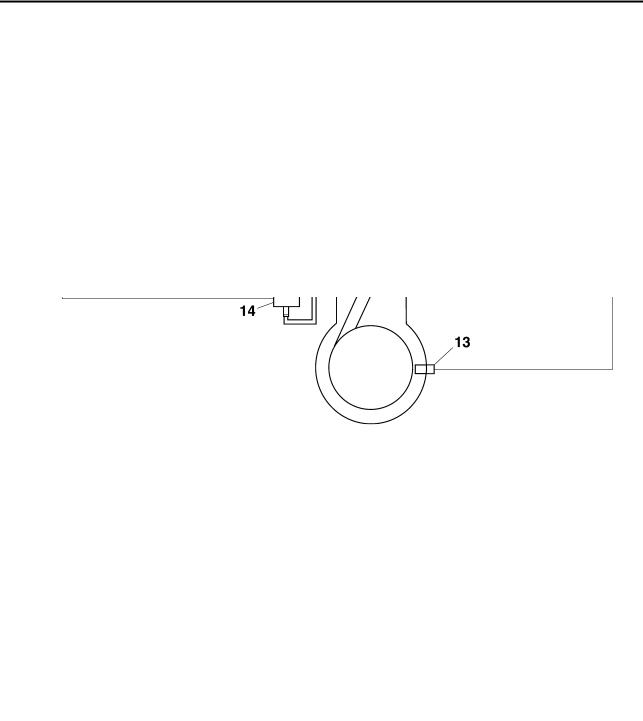
FEATURES
EAS4C81010
FI SYSTEM
The fuel pump delivers fuel to the fuel injector via the fuel filter. The pressure regulator maintains the fuel pressure that is applied to the fuel injector at only 324 kPa (3.24 kg/cm2, 46.1 psi). Accordingly, when the energizing signal from the ECU energizes the fuel injector, the fuel passage opens, causing the fuel to be injected into the intake manifold only during the time the passage remain open.
Therefore, the longer the length of time the fuel injector is energized (injection duration), the greater the volume of fuel that is supplied. Conversely, the shorter the length of time the fuel injector is energized (injection duration), the lesser the volume of fuel that is supplied.
The injection duration and the injection timing are controlled by the ECU. Signals that are input from the throttle position sensor (for throttle valves), throttle position sensor (for throttle cable pulley), crankshaft position sensor, intake air pressure sensor, intake air temperature sensor, coolant temperature sensor, atmospheric pressure sensor, cylinder identification sensor, lean angle sensor, speed sensor and O2 sensor enable the ECU to determine the injection duration. The injection timing is determined through the signals from the crankshaft position sensor. As a result, the volume of fuel that is required by the engine can be supplied at all times in accordance with the driving conditions.
1.Fuel pump
2.Injector
3.Cylinder identification sensor
4.ECU (engine control unit)
5.Throttle position sensor (for throttle valves)
6.Throttle position sensor (for throttle cable pulley)
7.Speed sensor
8.Intake air temperature sensor
9.Lean angle sensor
10.O2 sensor 11.Catalytic converter
12.Coolant temperature sensor 13.Crankshaft position sensor 14.Intake air pressure sensor 15.Throttle servo motor 16.Throttle body 17.Atmospheric pressure sensor 18.Air filter case
19.Intake funnel servo motor
A.Fuel system
B.Air system
C.Control system
1-3

FEATURES
EAS4C81011
YCC-T (Yamaha Chip Controlled Throttle) YCC-I (Yamaha Chip Controlled Intake)
Mechanism characteristics
Yamaha developed the YCC-T and YCC-I system employing the most advanced electronic control technologies. Electronic control throttle systems have been used on automobiles, but Yamaha has developed a faster, more compact system specifically for the needs of a sports motorcycle. The Yamaha-developed system has a high-speed calculating capacity that produces computations of running conditions every 1/1000th of a second.
The YCC-T system is designed to respond to the throttle action of the rider by having the ECU instantaneously calculate the ideal throttle valve opening and generate signals to operate the motordriven throttle valves and thus actively control the intake air volume.
The ECU contains three CPUs with a capacity about five times that of conventional units, making it possible for the system to respond extremely quickly to the slightest adjustments made by the rider. In particular, optimized control of the throttle valve opening provides the optimum volume of intake air for easy-to-use torque, even in a high-revving engine.
The YCC-I system calculates the value from the engine revolution number and throttle opening rate, activates the intake air funnel with the electronic control motor drive to control the intake pipe length in order to gain the high power output in all revolution ranges from low speeds to high speeds.
Aims and advantages of using YCC-T system
•Increased engine power
By shortening the air intake path, higher engine speed is possible → Increased engine power.
•Improved driveability
Air intake volume is controlled according to the operating conditions → Improved throttle response to meet engine requirement.
Driving force is controlled at the optimal level according to the transmission gear position and engine speed → Improved throttle control.
•Engine braking control
Due to the throttle control, optimal engine braking is made possible.
•Simplified idle speed control (ISC) mechanism
The bypass mechanism and ISC actuator are eliminated → A simple mechanism is used to maintain a steady idle speed.
•Reduced weight
Compared to using a sub-throttle mechanism, weight is reduced.
1. Throttle position sensor (for throttle cable |
A. To throttle grip |
pulley) |
|
2.Throttle servo motor
3.Throttle position sensor (for throttle valves)
4.Throttle valves
5.Throttle cable pulley with linkage guard
1-4
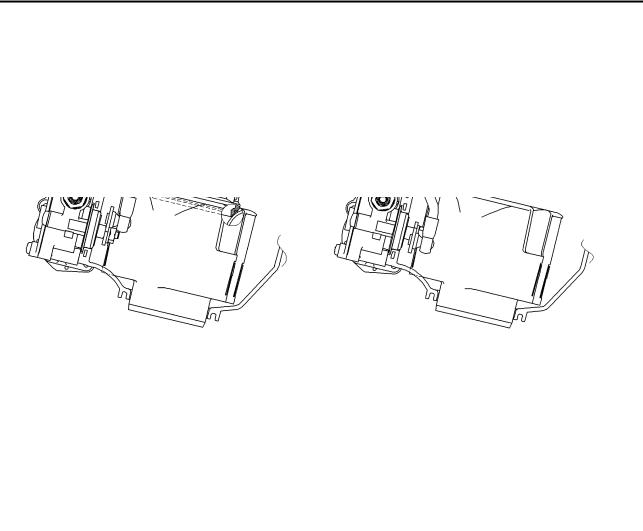
FEATURES
Aims and advantages of using YCC-I system
•Improvement of the engine power characteristics
The high power design in all ranges is now provided by having both two features of the short intake function to ensure the power at the high speed revolution of engine, and the long intake function to ensure the power in the practical use range.
•Intake pipe length switching control using the motor
The intake pipe length switching operation in a minute time is now available by means of the motor drive using the electronic control.The smooth power characteristic is provided, which does not let an operator feel the switching action by the optimization of its switching revolution number and the most suitable application of engine at the time of changing the revolution.
A.Down position (long intake) (Low rpm to Mid rpm)
B.Up position (short intake) (High rpm)
1-5
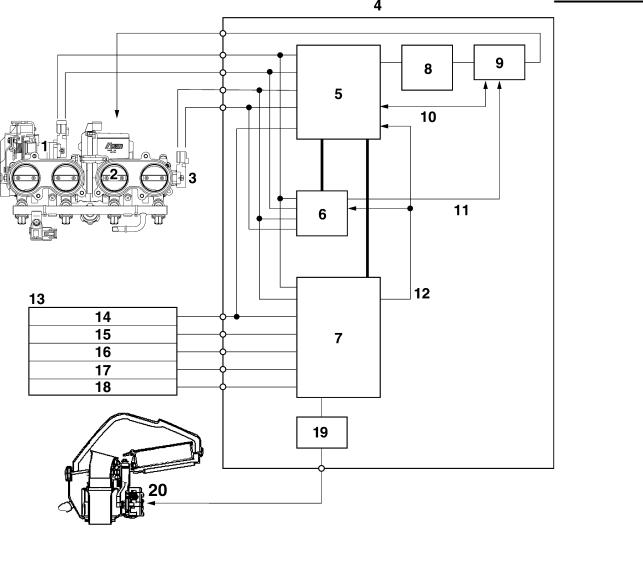
FEATURES
YCC-T/YCC-I system outline
1.Throttle position sensor (for throttle cable pulley)
2.Throttle servo motor
3.Throttle position sensor (for throttle valves)
4.ECU (engine control unit)
5.ETV main CPU (32 bit)
6.ETV sub CPU (16 bit)
7.FI CPU (32 bit)
8.Throttle servo motor driver
9.Throttle servo motor driver operation sensing/shut off circuit
10.Throttle servo motor driver operation sensing feedback/emergency stop
11.Emergency stop
12.Engine revolution (pulse signal) 13.Sensor input
14.Neutral switch 15.Crankshaft position sensor 16.Speed sensor
17.Coolant temperature sensor 18.Atmospheric pressure sensor
19.Intake funnel servo motor driver 20.Intake funnel servo motor
1-6
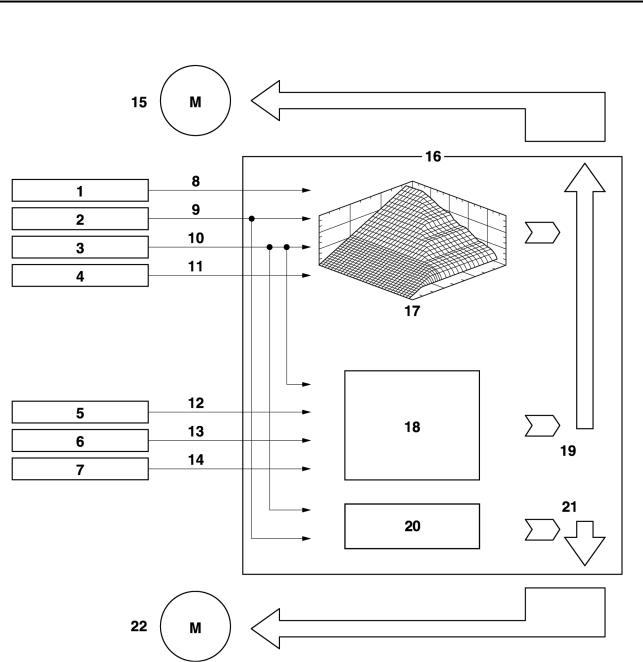
FEATURES
YCC-T/YCC-I control outline
1.Throttle position sensor (for throttle cable pulley)
2.Throttle position sensor (for throttle valves)
3.Crankshaft position sensor
4.Speed sensor
5.Coolant temperature sensor
6.Neutral switch
7.Atmospheric pressure sensor
8.Accelerator position (two signals)
9.Throttle position (two signals)
10.Engine revolution 11.Vehicle speed 12.Coolant temperature 13.Neutral/In gear 14.Atmospheric pressure
15.Throttle servo motor 16.ECU (engine control unit) 17.Base map
18.Idle speed control
19.Calculated throttle valve opening angle 20.Base map
21.Air funnel position (Calculation value) 22.Intake funnel servo motor
1-7

FEATURES
EAS4C81024
INSTRUMENT FUNCTIONS
Multi-function meter unit
1.Clock
2.Speedometer
3.“SELECT” button
4.“RESET” button
5.Tachometer
6.Coolant temperature display/air intake temperature display
7.Odometer/tripmeters/fuel reserve tripmeter/ stopwatch
8.Shift timing indicator light
EWA4C81008
 WARNING
WARNING
Be sure to stop the vehicle before making any setting changes to the multi-function meter unit.
The multi-function meter unit is equipped with the following:
•a speedometer (which shows the riding speed)
•a tachometer (which shows engine speed)
•an odometer (which shows the total distance traveled)
•two tripmeters (which show the distance traveled since they were last set to zero)
•a fuel reserve tripmeter (which shows the distance traveled since the fuel level warning light came on)
•a clock
•a coolant temperature display
•an air intake temperature display
•a self-diagnosis device
•a display brightness and shift timing indicator light control mode
NOTE:
•Be sure to turn the key to “ON” before using the “SELECT” and “RESET” buttons.
•To switch the speedometer and odometer/ tripmeter displays between kilometers and miles, press the “SELECT” button for at least one second.
Tachometer
1.Tachometer
2.Tachometer red zone
The electric tachometer allows the rider to monitor the engine speed and keep it within the ideal power range.
When the key is turned to “ON”, the tachometer needle will sweep once across the r/min range and then return to zero r/min in order to test the electrical circuit.
ECA4C81017
CAUTION:
Do not operate the engine in the tachometer red zone.
Red zone: 13750 r/min and above
Clock mode
1. Clock
Turn the key to “ON”.
To set the clock
1.Push the “SELECT” button and “RESET” button together for at least two seconds.
2.When the hour digits start flashing, push the “RESET” button to set the hours.
3.Push the “SELECT” button, and the minute digits will start flashing.
1-8
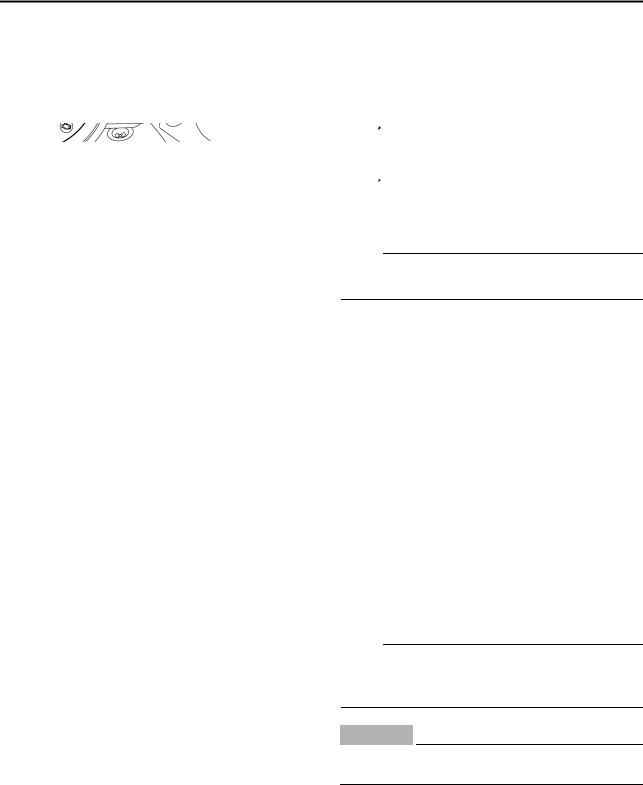
FEATURES
4.Push the “RESET” button to set the minutes.
5.Push the “SELECT” button and then release it to start the clock.
Odometer, tripmeter, and stopwatch modes
1. Odometer/tripmeter/fuel reserve tripmeter
Push the “SELECT” button to switch the display between the odometer mode “ODO” and the tripmeter modes “TRIP A” and “TRIP B” and the stopwatch mode in the following order: TRIP A → TRIP B → ODO → Stopwatch → TRIP A
If the fuel level warning light comes on, the odometer display will automatically change to the fuel reserve tripmeter mode “F-TRIP” and start counting the distance traveled from that point. In that case, push the “SELECT” button to switch the display between the various tripmeter, odometer, and stopwatch modes in the following order:
F-TRIP → Stopwatch → TRIP A → TRIP B → ODO → F-TRIP
To reset a tripmeter, select it by pushing the “SELECT” button, and then push the “RESET” button for at least one second. If you do not reset the fuel reserve tripmeter manually, it will reset itself automatically and the display will return to the prior mode after refueling and traveling 5 km (3 mi).
Stopwatch mode
To change the display to the stopwatch mode, select it by pushing the “SELECT” button. (The stopwatch digits will start flashing.) Release the “SELECT” button, and then push it again for a few seconds until the stopwatch digits stop flashing.
Standard measurement
1.Push the “RESET” button to start the stopwatch.
2.Push the “SELECT” button to stop the stopwatch.
3. Push the “SELECT” button again to reset the stopwatch.
Split-time measurement
1.Push the “RESET” button to start the stopwatch.
2.Push the “RESET” button or start switch
“ ” to measure split-times. (The colon “:” will start flashing.)
” to measure split-times. (The colon “:” will start flashing.)
3.Push the “RESET” button or start switch
“ ” to measure split-times. (The colon “:” will start flashing.)
” to measure split-times. (The colon “:” will start flashing.)
4.Push the “SELECT” button to reset the stopwatch.
NOTE:
To change the display back to the prior mode, push the “SELECT” button for a few seconds.
Coolant temperature display
1. Coolant temperature display
The coolant temperature display indicates the temperature of the coolant.
Push the “RESET” button to switch the coolant temperature display to the air intake temperature display.
NOTE:
When the coolant temperature display is selected, “C” is displayed for one second, and then the coolant temperature is displayed.
ECA4C81018
CAUTION:
Do not operate the engine if it is overheated.
1-9
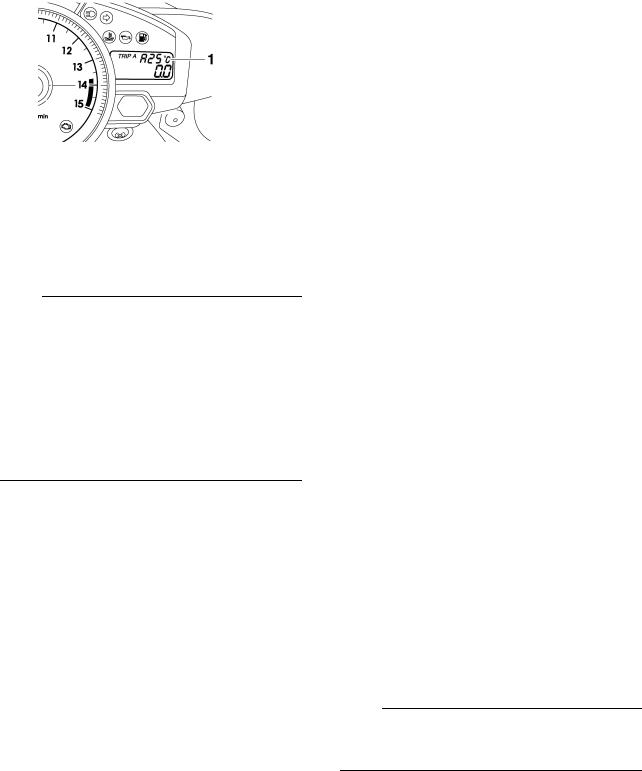
|
FEATURES |
|
|
Air intake temperature display |
Display brightness and shift timing indica- |
|
tor light control mode |
1. Air intake temperature display
The air intake temperature display indicates the temperature of the air drawn into the air filter case. Push the “RESET” button to switch the coolant temperature display to the air intake temperature display.
NOTE:
•Even if the air intake temperature is set to be displayed, the coolant temperature warning light comes on when the engine overheats.
•When the key is turned to “ON”, the coolant temperature is automatically displayed, even if the air intake temperature was displayed prior to turning the key to “OFF”.
•When the air intake temperature display is selected, “A” is displayed before the temperature.
Self-diagnosis device
1. Error code display
This model is equipped with a self-diagnosis device for various electrical circuits.
If any of those circuits are defective, the engine trouble warning light will come on, and then the display will indicate a two-digit error code.
1.Display brightness
2.Shift timing indicator light activation/deactivation
3.Shift timing indicator light
4.Brightness level
This mode cycles through five control functions, allowing you to make the following settings in the order listed below.
Display brightness:
•This function allows you to adjust the brightness of the displays and tachometer to suit the outside lighting conditions.
•Shift timing indicator light activity:
This function allows you to choose whether or not the indicator light should be activated and whether it should flash or stay on when activated.
•Shift timing indicator light activation:
This function allows you to select the engine speed at which the indicator light will be activated.
•Shift timing indicator light deactivation:
This function allows you to select the engine speed at which the indicator light will be deactivated.
•Shift timing indicator light brightness:
This function allows you to adjust the brightness of the indicator light to suit your preference.
NOTE:
In this mode, the right display shows the current setting for each function (except the shift timing indicator light activity function).
To adjust the brightness of the multifunction meter displays and tachometer
1.Turn the key to “OFF”.
2.Push and hold the “SELECT” button.
3.Turn the key to “ON”, and then release the “SELECT” button after five seconds.
1-10

FEATURES
4.Push the “RESET” button to select the desired brightness level.
5.Push the “SELECT” button to confirm the selected brightness level. The control
mode changes to the shift timing indicator light activity function.
To set the shift timing indicator light activity function
1.Push the “RESET” button to select one of the following indicator light activity settings:
•The indicator light will stay on when activated. (This setting is selected when the indicator light stays on.)
•The indicator light will flash when activated. (This setting is selected when the indicator light flashes four times per second.)
•The indicator light is deactivated; in other words, it will not come on or flash. (This setting is selected when the indicator light flashes once every two seconds.)
2.Push the “SELECT” button to confirm the selected indicator light activity. The control mode changes to the shift timing indicator
light activation function.ry two seconds.) To set the shift timing indicator light activation function
NOTE:
The shift timing indicator light activation function can be set between 7000 r/min and 15000 r/min. From 7000 r/min to 12000 r/min, the indicator light can be set in increments of 500 r/ min. From 12000 r/min to 15000 r/min, the indicator light can be set in increments of 200 r/ min.
1.Push the “RESET” button to select the desired engine speed for activating the indicator light.
2.Push the “SELECT” button to confirm the selected engine speed. The control mode
changes to the shift timing indicator light deactivation function.
To set the shift timing indicator light deactivation function
NOTE:
•The shift timing indicator light deactivation function can be set between 7000 r/min and 15000 r/min. From 7000 r/min to 12000 r/ min, the indicator light can be set in increments of 500 r/min. From 12000 r/min to 15000 r/min, the indicator light can be set in increments of 200 r/min.
•Be sure to set the deactivation function to a higher engine speed than for the activation function, otherwise the shift timing indicator light will remain deactivated.
1.Push the “RESET” button to select the desired engine speed for deactivating the indicator light.
2.Push the “SELECT” button to confirm the selected engine speed. The control mode changes to the shift timing indicator light brightness function.
To adjust the shift timing indicator light brightness
1.Push the “RESET” button to select the desired indicator light brightness level.
2.Push the “SELECT” button to confirm the selected indicator light brightness level. The right display will return to the odometer or tripmeter mode.
1-11

IMPORTANT INFORMATION
EAS20180
IMPORTANT INFORMATION
EAS20190
PREPARATION FOR REMOVAL AND DISASSEMBLY
1.Before removal and disassembly, remove all dirt, mud, dust and foreign material.
2.Use only the proper tools and cleaning equipment.
Refer to "SPECIAL TOOLS" on page 1-15.
3.When disassembling, always keep mated parts together. This includes gears, cylinders, pistons and other parts that have been “mated” through normal wear. Mated parts must always be reused or replaced as an assembly.
EAS20210
GASKETS, OIL SEALS AND O-RINGS
1.When overhauling the engine, replace all gaskets, seals and O-rings. All gasket surfaces, oil seal lips and O-rings must be cleaned.
2.During reassembly, properly oil all mating parts and bearings and lubricate the oil seal lips with grease.
4.During disassembly, clean all of the parts and place them in trays in the order of disassembly. This will speed up assembly and allow for the correct installation of all parts.
5.Keep all parts away from any source of fire.
EAS20200
REPLACEMENT PARTS
Use only genuine Yamaha parts for all replacements. Use oil and grease recommended by Yamaha for all lubrication jobs. Other brands may be similar in function and appearance, but inferior in quality.
1.Oil
2.Lip
3.Spring
4.Grease
EAS20220
LOCK WASHERS/PLATES AND COTTER PINS
After removal, replace all lock washers/plates “1” and cotter pins. After the bolt or nut has been tightened to specification, bend the lock tabs along a flat of the bolt or nut.
1-12

IMPORTANT INFORMATION
EAS20230
BEARINGS AND OIL SEALS
Install bearings “1” and oil seals “2” so that the manufacturer’s marks or numbers are visible. When installing oil seals, lubricate the oil seal lips with a light coat of lithium-soap-based grease. Oil bearings liberally when installing, if appropriate.
ECA13300
CAUTION:
Do not spin the bearing with compressed air because this will damage the bearing surfaces.
EAS20240
CIRCLIPS
Before reassembly, check all circlips carefully and replace damaged or distorted circlips. Always replace piston pin clips after one use. When installing a circlip “1”, make sure the sharp-edged corner “2” is positioned opposite the thrust “3” that the circlip receives.
1-13
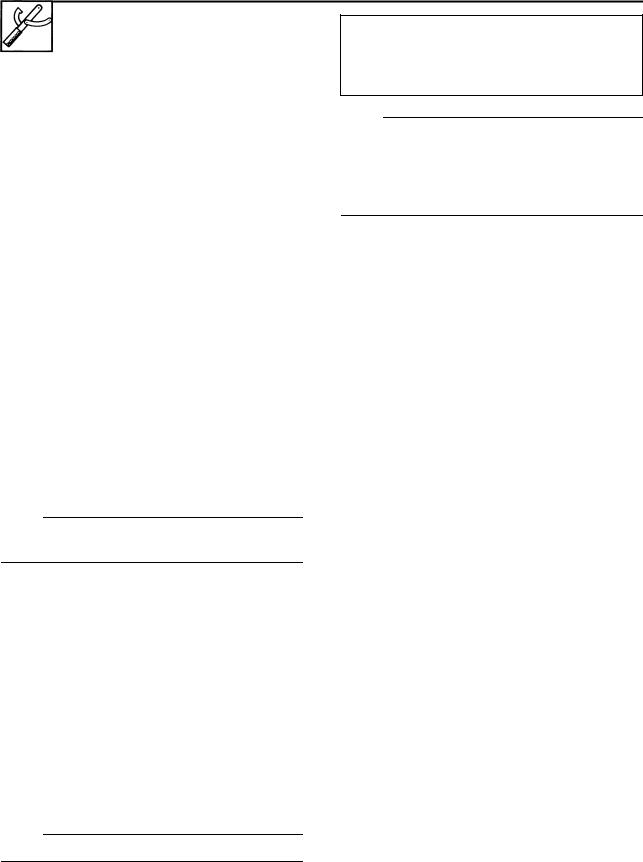
CHECKING THE CONNECTIONS
EAS20250
CHECKING THE CONNECTIONS
Check the leads, couplers, and connectors for stains, rust, moisture, etc.
1.Disconnect:
•Lead
•Coupler
•Connector
2.Check:
•Lead
•Coupler
•Connector
Moisture → Dry with an air blower. Rust/stains → Connect and disconnect several times.
3.Check:
•All connections
Loose connection → Connect properly.
NOTE:
If the pin “1” on the terminal is flattened, bend it up.
4.Connect:
•Lead
•Coupler
•Connector
NOTE:
Make sure all connections are tight.
5.Check:
•Continuity
(with the pocket tester)
Pocket tester 90890-03112
Analog pocket tester YU-03112-C
NOTE:
•If there is no continuity, clean the terminals.
•When checking the wire harness, perform steps (1) to (3).
•As a quick remedy, use a contact revitalizer available at most part stores.
1-14
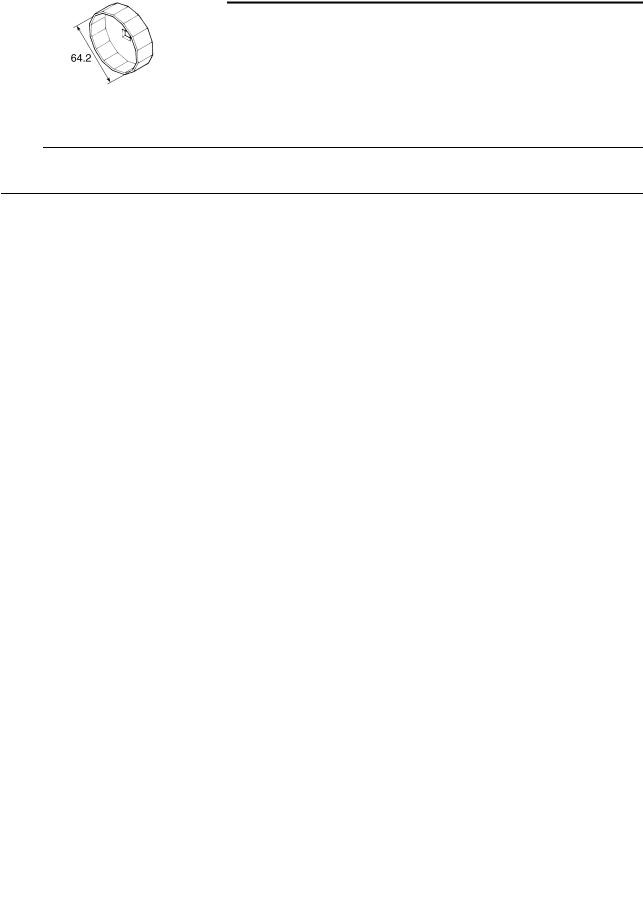
SPECIAL TOOLS
EAS20260
SPECIAL TOOLS
The following special tools are necessary for complete and accurate tune-up and assembly. Use only the appropriate special tools as this will help prevent damage caused by the use of inappropriate tools or improvised techniques. Special tools, part numbers or both may differ depending on the country.
When placing an order, refer to the list provided below to avoid any mistakes.
NOTE:
•For U.S.A. and Canada, use part number starting with “YM-”, “YU-”, or “ACC-”.
•For others, use part number starting with “90890-”.
Tool name/Tool No. |
Illustration |
Reference |
|
pages |
|||
|
|
||
|
|
|
|
Piston pin puller set |
|
5-71 |
|
90890-01304 |
|
|
|
Piston pin puller |
|
|
|
YU-01304 |
|
|
|
|
|
|
|
Radiator cap tester |
|
6-3 |
|
90890-01325 |
|
|
|
Radiator pressure tester |
|
|
|
YU-24460-01 |
|
|
|
|
|
|
|
Radiator cap tester adapter |
|
6-3 |
|
90890-01352 |
|
|
|
Radiator pressure tester adapter |
|
|
|
YU-33984 |
|
|
|
|
|
|
|
Steering nut wrench |
|
3-28, 4-60 |
|
90890-01403 |
|
|
|
Spanner wrench |
|
|
|
YU-33975 |
|
|
|
|
|
|
|
Damper rod holder |
|
4-52, 4-53 |
|
90890-01423 |
|
|
|
Damping rod holder |
|
|
|
YM-01423 |
|
|
|
|
|
|
|
Oil filter wrench |
|
3-12 |
|
90890-01426 |
|
|
|
YU-38411 |
|
|
|
|
|
|
1-15

|
|
SPECIAL TOOLS |
|
|
|
|
|
|
|
|
|
Tool name/Tool No. |
Illustration |
|
Reference |
|
pages |
||
|
|
|
|
|
|
|
|
Rod holder |
|
|
4-51, 4-56 |
90890-01434 |
|
|
|
Damper rod holder double ended |
|
|
|
YM-01434 |
|
|
|
|
|
|
|
Rod puller |
|
|
4-55, 4-56 |
90890-01437 |
|
|
|
Universal damping rod bleeding tool set |
|
|
|
YM-A8703 |
|
|
|
|
|
|
|
Rod puller attachment (M12) |
|
|
4-55, 4-56 |
90890-01435 |
|
|
|
Universal damping rod bleeding tool set |
|
|
|
YM-A8703 |
|
|
|
|
|
|
|
Fork spring compressor |
|
|
4-51, 4-56 |
90890-01441 |
|
|
|
YM-01441 |
|
|
|
|
|
|
|
Fork seal driver |
|
|
4-54 |
90890-01442 |
|
|
|
Adjustable fork seal driver (36–46 mm) |
|
|
|
YM-01442 |
|
|
|
|
|
|
|
Vacuum gauge |
|
|
3-7 |
90890-03094 |
|
|
|
Carburetor synchronizer |
|
|
|
YU-44456 |
|
|
|
|
|
|
|
Compression gauge |
|
|
3-10 |
90890-03081 |
|
|
|
Engine compression tester |
|
|
|
YU-33223 |
|
|
|
|
|
|
|
Extension |
|
|
3-10 |
90890-04136 |
|
|
|
|
|
|
|
1-16

|
|
SPECIAL TOOLS |
|
|
|
|
|
|
|
|
|
Tool name/Tool No. |
Illustration |
|
Reference |
|
pages |
||
|
|
|
|
|
|
|
|
Valve spring compressor |
|
|
5-23, 5-29 |
90890-04019 |
|
|
|
YM-04019 |
|
|
|
|
|
|
|
Valve spring compressor attachment |
|
|
5-23, 5-29 |
90890-04108 |
|
|
|
Valve spring compressor adapter (22 mm) |
|
|
|
YM-04108 |
|
|
|
|
|
|
|
Middle driven shaft bearing driver |
|
|
6-11 |
90890-04058 |
|
|
|
Bearing driver (40 mm) |
|
|
|
YM-04058 |
|
|
|
|
|
|
|
Mechanical seal installer |
|
|
6-11 |
90890-04078 |
|
|
|
Water pump seal installer |
|
|
|
YM-33221-A |
|
|
|
|
|
|
|
Universal clutch holder |
|
|
5-47, 5-51 |
90890-04086 |
|
|
|
YM-91042 |
|
|
|
|
|
|
|
Valve guide remover (ø5) |
|
|
5-25 |
90890-04097 |
|
|
|
Valve guide remover (5.0 mm) |
|
|
|
YM-04097 |
|
|
|
|
|
|
|
Valve guide remover (ø4.5) |
|
|
5-25 |
90890-04116 |
|
|
|
Valve guide remover (4.5 mm) |
|
|
|
YM-04116 |
|
|
|
|
|
|
|
Valve guide installer (ø5) |
|
|
5-25 |
90890-04098 |
|
|
|
Valve guide installer (5.0 mm) |
|
|
|
YM-04098 |
|
|
|
|
|
|
|
1-17

|
|
SPECIAL TOOLS |
|
|
|
|
|
|
|
|
|
Tool name/Tool No. |
Illustration |
|
Reference |
|
pages |
||
|
|
|
|
|
|
|
|
Valve guide installer (ø4.5) |
|
|
5-25 |
90890-04117 |
|
|
|
Valve guide installer (4.5 mm) |
|
|
|
YM-04117 |
|
|
|
|
|
|
|
Valve guide reamer (ø5) |
|
|
5-25 |
90890-04099 |
|
|
|
Valve guide reamer (5.0 mm) |
|
|
|
YM-04099 |
|
|
|
|
|
|
|
Valve guide reamer (ø4.5) |
|
|
5-25 |
90890-04118 |
|
|
|
Valve guide reamer (4.5mm) |
|
|
|
YM-04118 |
|
|
|
|
|
|
|
Ignition checker |
|
|
8-84 |
90890-06754 |
|
|
|
Opama pet-4000 spark checker |
|
|
|
YU-34487 |
|
|
|
|
|
|
|
Yamaha bond No.1215 |
|
|
5-67, 6-11 |
(Three Bond No.1215) |
|
|
|
90890-85505 |
|
|
|
|
|
|
|
Pivot shaft wrench |
|
|
5-7 |
90890-01471 |
|
|
|
Frame spanner socket |
|
|
|
YM-01471 |
|
|
|
|
|
|
|
Pivot shaft wrench adapter |
|
|
5-7 |
90890-01476 |
|
|
|
|
|
|
|
Pocket tester |
|
|
1-14, 5-41, 8-75, |
90890-03112 |
|
|
8-76, 8-77, 8-80, |
Analog pocket tester |
|
|
8-81, 8-82, 8-83, |
YU-03112-C |
|
|
8-84, 8-85, 8-86, |
|
|
|
8-87, 8-88, 8-89, |
|
|
|
8-90, 8-91, 8-92 |
|
|
|
|
1-18

|
|
SPECIAL TOOLS |
|
|
|
|
|
|
|
|
|
Tool name/Tool No. |
Illustration |
|
Reference |
|
pages |
||
|
|
|
|
|
|
|
|
Oil pressure gauge adapter |
|
|
3-13 |
90890-03139 |
|
|
|
|
|
|
|
Valve lapper |
|
|
3-5 |
90890-04101 |
|
|
|
Valve lapping tool |
|
|
|
YM-A8998 |
|
|
|
|
|
|
|
Fuel pressure adapter |
|
|
7-6 |
90890-03176 |
|
|
|
YM-03176 |
|
|
|
|
|
|
|
Pressure gauge |
|
|
3-13, 7-6 |
90890-03153 |
|
|
|
YU-03153 |
|
|
|
|
|
|
|
Camshaft wrench |
|
|
5-11, 5-16 |
90890-04143 |
|
|
|
YM-04143 |
|
|
|
|
|
|
|
Ring nut wrench |
|
|
4-67, 4-69 |
90890-01507 |
|
|
|
YM-01507 |
|
|
|
|
|
|
|
Damper rod holder (22 mm) |
|
|
4-68, 4-69 |
90890-01365 |
|
|
|
|
|
|
|
1-19

SPECIFICATIONS
GENERAL SPECIFICATIONS...................................................................... |
2-1 |
|
ENGINE SPECIFICATIONS.......................................................................... |
2-2 |
|
CHASSIS SPECIFICATIONS........................................................................ |
2-8 |
|
|
|
|
ELECTRICAL SPECIFICATIONS |
2-10 |
2 |
|
||
TIGHTENING TORQUES............................................................................ |
2-12 |
|
.......................GENERAL TIGHTENING TORQUE SPECIFICATIONS |
2-12 |
|
ENGINE TIGHTENING TORQUES ...................................................... |
2-13 |
|
CHASSIS TIGHTENING TORQUES .................................................... |
2-17 |
|
LUBRICATION POINTS AND LUBRICANT TYPES .................................. |
2-20 |
|
ENGINE ................................................................................................ |
2-20 |
|
CHASSIS .............................................................................................. |
2-21 |
|
LUBRICATION SYSTEM CHART AND DIAGRAMS ................................. |
2-23 |
|
ENGINE OIL LUBRICATION CHART ................................................... |
2-23 |
|
LUBRICATION DIAGRAMS .................................................................. |
2-25 |
|
COOLING SYSTEM DIAGRAMS ............................................................... |
2-35 |
|
CABLE ROUTING ...................................................................................... |
2-39 |
|
|
GENERAL SPECIFICATIONS |
|
|
EAS20280 |
|
GENERAL SPECIFICATIONS |
|
|
|
Model |
|
Model |
4C84 (U.S.A.) |
|
4C85 (California) |
|
|
Dimensions |
|
Overall length |
2060 mm (81.1 in) |
Overall width |
720 mm (28.3 in) |
Overall height |
1110 mm (43.7 in) |
Seat height |
835 mm (32.9 in) |
Wheelbase |
1415 mm (55.7 in) |
Ground clearance |
135 mm (5.31 in) |
Minimum turning radius |
3400 mm (133.9 in) |
|
|
Weight |
|
With oil and fuel |
200 kg (441 lb) |
Maximum load |
195 kg (430 lb) |
2-1
